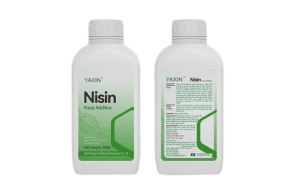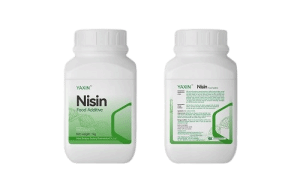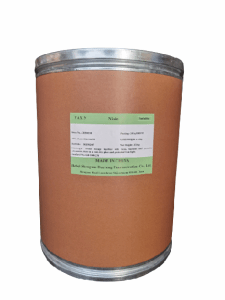
 CONTACT
CONTACT
- Linkman:Linda Yao
- Tel: +8618231198596
- Email:linda.yao@dcpharma.cn
- Linkman:CHARLES.WANG
- Department:Overseas
- Tel: 0086 0311-85537378 0086 0311-85539701
Nisin Exported from China,Safe and antiseptic
TIME:2024-10-30
Nisin, when used in meat products, requires strict control of its dosage to ensure safety and optimal preservation effects. Nisin is a natural antimicrobial peptide with a broad-spectrum antibacterial effect, effectively inhibiting the growth and reproduction of most Gram-positive bacteria and their spores. It has good stability, is heat and acid-resistant, and shows great application prospects in the food industry.Nisin is recognized globally as a safe natural biopreservative and antimicrobial agent.
When using nisin, it is essential to comply with national laws and industry standards. Specific regulations in China outline the allowable scope and maximum usage levels of nisin in food; for instance, the maximum allowable amount in meat products is typically 0.5 grams per kilogram. Therefore, actual usage must not exceed this standard.
Different types of meat products and varying processing conditions may require different amounts of nisin. For example, in ultra-high-temperature (UHT) sterilized milk, where the product has undergone high-temperature treatment, less nisin may be needed. Conversely, in secondary sterilized milk or pasteurized milk, where sterilization intensity is lower or flavor and color need to be preserved, a higher nisin dosage may be necessary.
Additionally, factors such as the pH level, moisture content, and fat content of meat products can influence nisin's preservative effectiveness. Thus, in practical applications, the dosage should be adjusted based on the specific circumstances and processing conditions of the meat products.
Although nisin has a broad antibacterial effect, its spectrum is relatively narrow, mainly targeting Gram-positive bacteria. Therefore, in meat processing, it may be necessary to combine nisin with other preservatives to achieve a wider inhibitory effect. However, interactions between nisin and other preservatives must be considered, as some chemical preservatives may exhibit antagonistic or synergistic effects, impacting nisin's preservation efficiency. Thorough testing and evaluation are essential when selecting and using preservatives.
To ensure the safety and efficacy of nisin in meat products, enhanced quality control and monitoring are crucial. This includes strict control of microbial indicators in raw milk or meat products, accurate measurement of nisin dosage, and regular testing of product shelf life. By strengthening quality control and monitoring, issues can be identified and addressed promptly, ensuring product quality and safety.
In summary, strict control of nisin dosage in meat products is necessary to ensure its safety and effectiveness. By adhering to national laws and industry standards, adjusting dosages based on product type and processing conditions, considering interactions with other preservatives, and enhancing quality control and monitoring, nisin can provide optimal preservation effects while ensuring consumer health and safety.
- Tel:+8618231198596
- Whatsapp:18231198596
- Chat With Skype







